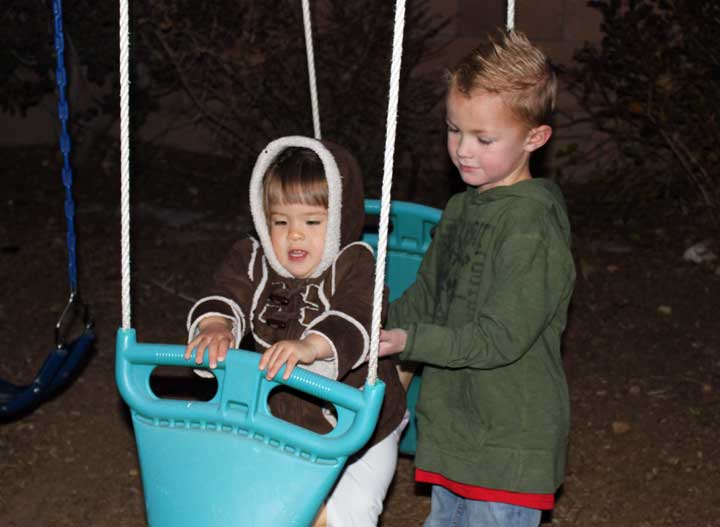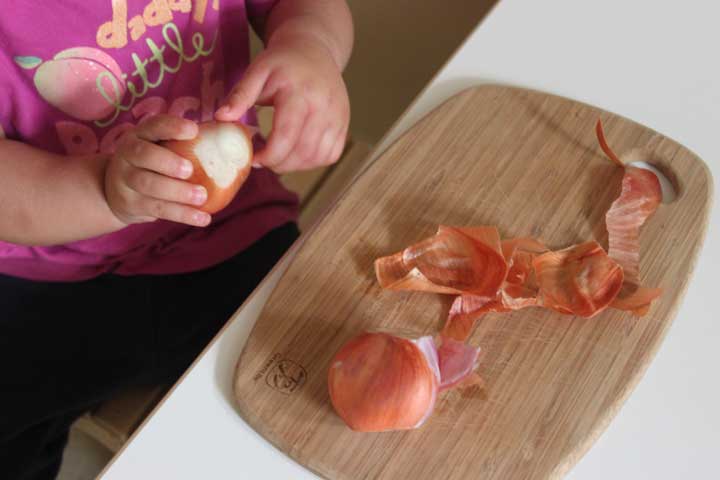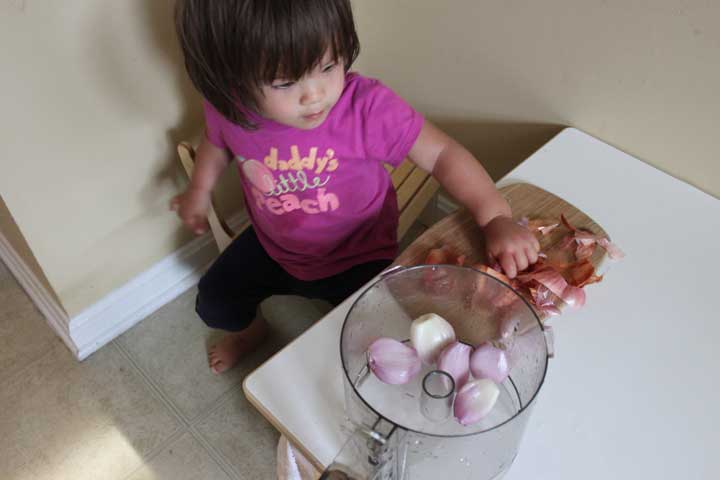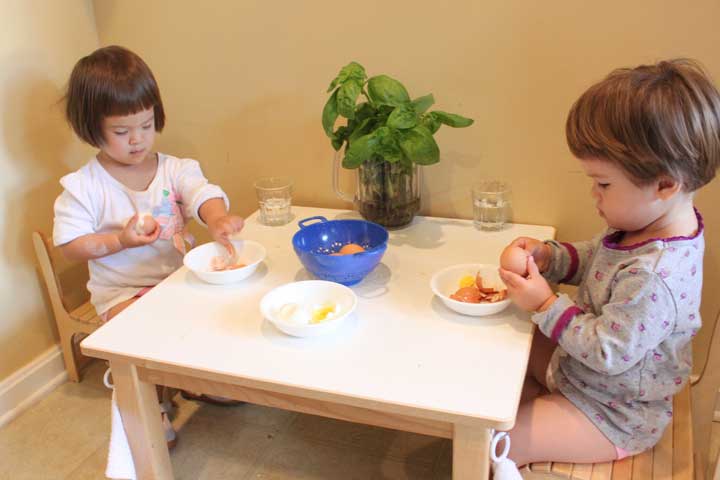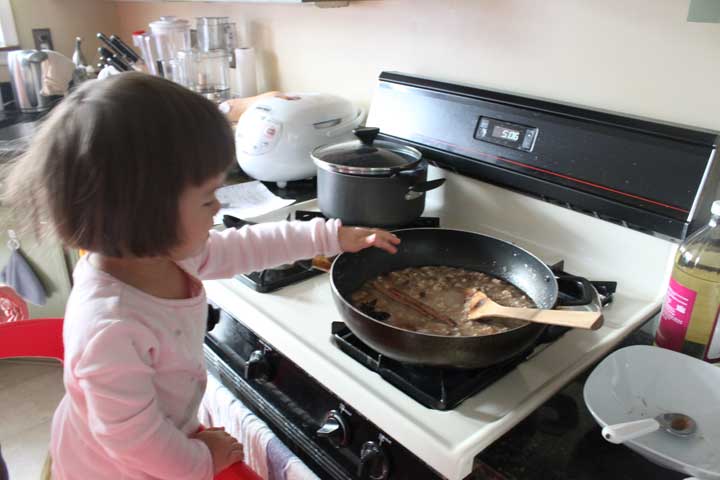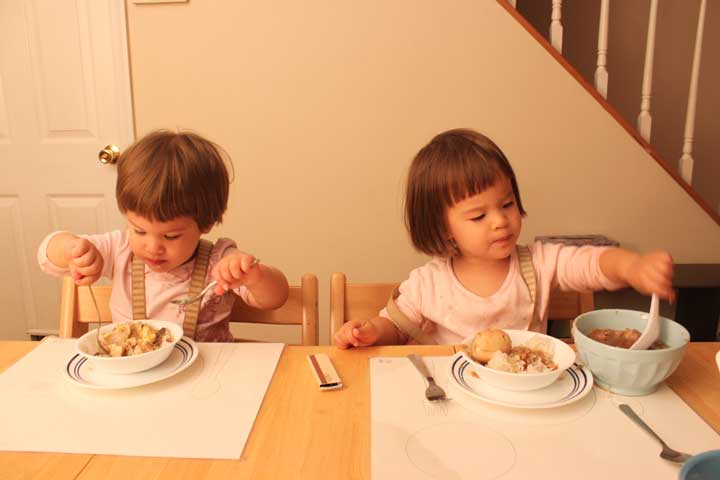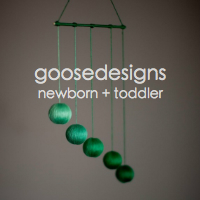Thanksgiving With Our Cousin Sam
For Thanksgiving, we flew down to the high desert of Albuquerque, NM to visit Mark’s family. There, B and M discovered a new love – their 5 1/2 year old big brother and cousin, Sam.
Sam has a half-sister who is much older than him, so in many ways, he’s like an only child. But he was a pro when it came to taking care of his little cousins. For example, the morning after we arrived, Mackenzie got her hands on Sam’s battery-operated tonka truck. He was trying to show her how it worked, but she wouldn’t listen and just kept on doing what she was doing. Sam said aloud to the rest of us, “She thinks that will work, but it won’t.” But he didn’t interfere. He just let her try it out. Lo and behold, minutes later, Mackenzie cries out – frustrated over the toy – “Help! Help!” Sam was then able to show her how to play with it properly. How many adults do you know who has the patience and wisdom of letting the little ones make their own mistakes?
Later, we were outside playing in the backyard. Brooke goes up to Sam and says, “Sam, help.” Sam starts walking. He sees that Brooke is just standing there, so he comes back, takes her hand and then says, “Show me what you want help with.” Brooke taps on the seat of the plastic horse swing (see picture) and says, “Here.” Now if I were helping Brooke, I would just pick her up and put her on, but I’m pretty sure Sam would have a hard time picking up his 30-pound cousin. As it turned out, it wasn’t necessary. Brooke was able to bring one leg onto the horse’s back by herself, and Sam only had to lift her up a little bit for her to get on. As Montessori says, “Any unnecessary help is a hindrance.” Picking her up all the way, like we adults would do, is unnecessary. Sam, on the other hand, was able to give her just the minimum amount of help necessary for her to be successful. The kind of help Sam gave her is what we Montessorians spend years trying to master.
In case you’re wondering, Sam goes to a Montessori school and is in the last year of his 3-6 primary class. Montessori mixed-age classrooms make so much sense. The older children take care of the younger ones, show them the ropes and then gradually, as the younger children get older, they start to take care of the new children that come in after them. You cannot ‘teach’ a child to do this, but when they’ve had the experience of being taken care of by older children, when it’s their turn, they do it naturally. The little society that’s created within the classroom doesn’t require much adult intervention, in fact, the more invisible the adult, the better. Older children make better teachers than adults (look at Sam) and the little children are eager and attentive to whatever the older ones are showing them. This makes me think of a traditional classroom I visited a couple weeks ago where the teacher stood in the front of the room ‘teaching’ while her kindergarteners sat cross-legged on their designated spots on the floor. The teacher asked questions and the children raised their hands to answer. If you got it right, everyone clapped, if you got it wrong, the teacher moved on the next hand. That’s the kind of learning environment I grew up in, and now I see how mechanical and insular it is.
So B and M had a great time in Albuquerque, discovering tonka trucks, building train tracks and swinging on swings with their new favorite playmate. And thanks to Sam, I was able to relax this Thanksgiving too!




